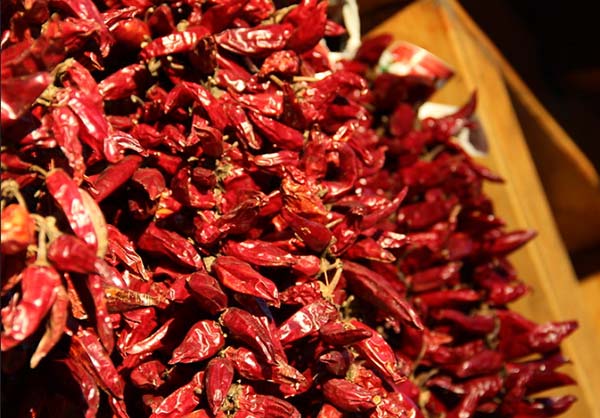
by Amanda Mather, Curator of Collections
There are certain cuisines and specific foods that are almost impossible to imagine without chile. Thai and Chinese cuisine, pasta arrabiata, I mean what did they even do in Szechuan before they had chiles?
Before contact, there wasn’t any chile to be had outside of the Americas. It’s hard to even imagine a world without chile, but for those not residing on this side of the planet that was indeed the case. In the Americas, chile was one of the first cultivated plants humans got their hands on. We have been eating and growing chile for about 6,000 years, which speaks to both its importance and deliciousness. The first chiles were likely cultivated in Northern Mexico and they have been a fixture in our cuisine ever since.
The word chile comes from the Nahuatl word ch illi; the pepper part came with Europeans who called them chile peppers on account of pepper being that only thing he could acquaint with the spicy bite of chile. And with that, chile began to spread all over the world, and quickly. Portuguese traders took them to Asia in the 15th century where, as we now know, their popularity was immediate and widespread.
What gives chiles their bite is a chemical called capsicum and other related chemicals called capsaicinoids. The amount of capsicum in a chile is measured in Scoville Heat Units, named for an American chemist that developed a test for capsaicinoids around the turn of the 19th century.
Here in New Mexico chile is our lifeblood, our identity, a source of pride and love. In the fall the smell of roasting green chile fills our grocery store parking lots, while people wait patiently to get their stash for the year. It gives us our state question “Red or Green?” and our ristras that we hang proudly in front of our houses. Here at El Rancho de las Golondrinas we grow our own, harvesting chile as summer turns into fall. We sure do love the stuff, and it is definitely one of the things that make New Mexico so special.

